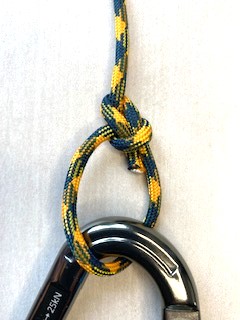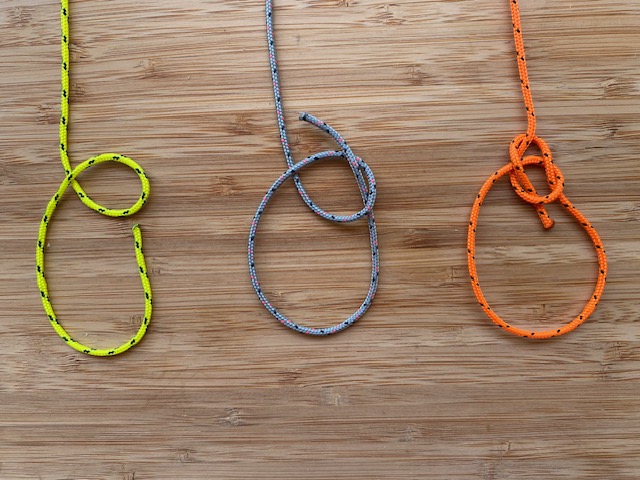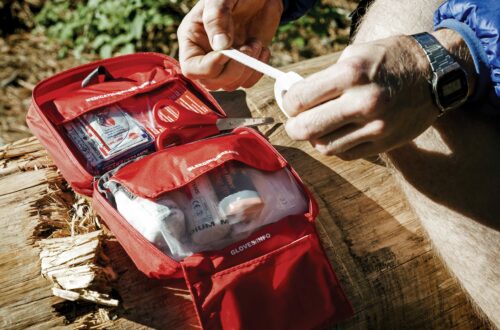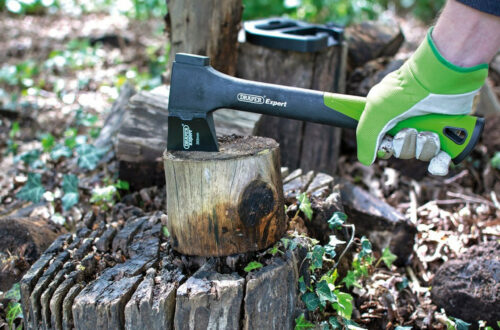
The Bowline
The Bowline knot forms a secure loop at the end of a rope, making it useful in various situations, particularly for activities like sailing, camping, climbing, and rescue operations.
It is an ancient and revered knot; renowned for its simplicity yet incredible strength, it stands as a timeless symbol of craftsmanship and utility
- Securing a line to a fixed object: The Bowline knot forms a secure loop at the end of a rope, allowing you to easily secure it to a fixed object like a post, pole, or ring.
- Rescue operations: It’s commonly used in rescue scenarios, such as in search and rescue missions or emergency situations, where a secure loop is needed to hoist or lower a person or object.
- Sailing and boating: Sailors often use the Bowline knot for securing lines to sails, creating loops for attaching to cleats, or tying off sheets and halyards.
- Climbing and mountaineering: Climbers rely on the Bowline knot for creating secure harness loops, attaching ropes to anchors, or for various other applications where a reliable loop knot is required.
- Camping and outdoor activities: Campers and outdoor enthusiasts use the Bowline knot for tasks such as hanging food bags in trees to keep them away from animals, creating makeshift clotheslines, or setting up shelters.
- Safety: The Bowline knot is known for its strength and reliability. When tied correctly, it forms a stable loop that is unlikely to slip or come undone, making it a safe choice for many applications.
- Ease of untying: Despite its security, the Bowline is relatively easy to untie after it has been under load, making it suitable for situations where you need a strong knot that can also be easily undone.
- Versatility: The Bowline knot can be tied in a variety of materials, including rope, cord, and even webbing, making it a versatile choice for a wide range of tasks.
- Teaching knot tying: The Bowline knot is often one of the first knots taught to beginners due to its simplicity and usefulness. Mastering the Bowline knot can serve as a foundation for learning more complex knots.
- Emergency situations: In emergency situations where improvisation is necessary, the Bowline knot can be quickly and easily tied to create a secure loop for various purposes, such as building shelters, constructing rafts, or creating makeshift harnesses.
Overall, the Bowline knot’s combination of strength, reliability, ease of tying, and versatility make it an essential knot for anyone engaged in outdoor activities, sailing, climbing, or emergency preparedness.

- Start by making a small loop in the end of the rope, with the end of the rope facing away from you.
- Take the end of the rope and pass it over the top of the standing part of the rope, behind the standing part, and then back up through the loop.
- Pass the end of the rope over the top of the loop and then down through the hole created by the loop.
- Tighten the knot by pulling on the standing part of the rope and the end of the rope.
- Double check that the loop is on the top and the tail is on the bottom.
It is important to check the strength of the knot before use and re-tighten as needed. The bowline is a versatile knot, used in many settings, such as boating, climbing, rescue, and more. It is known for its security, as it won’t slip or bind, and can be easily untied even after being loaded.
Overall, the Bowline knot’s combination of strength, reliability, ease of tying, and versatility make it an essential knot for anyone engaged in outdoor activities, sailing, climbing, or emergency preparedness.




